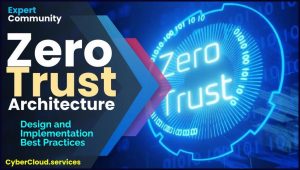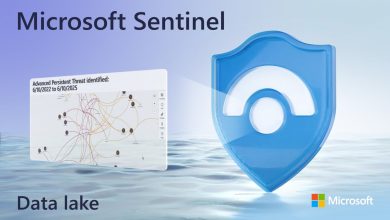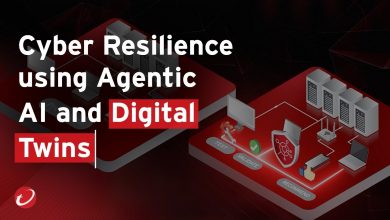Zscaler’s Zero Trust Security: Protecting Enterprises in the AI Era
Built on the principle of “never trust, always verify,” Zscaler’s cloud-native Zero Trust Exchange platform redefines cybersecurity.
 In an era where cyber threats are increasingly sophisticated and traditional perimeter-based security models are obsolete, Zscaler’s Zero Trust Architecture offers a transformative approach to securing modern enterprises.
In an era where cyber threats are increasingly sophisticated and traditional perimeter-based security models are obsolete, Zscaler’s Zero Trust Architecture offers a transformative approach to securing modern enterprises.
Built on the principle of “never trust, always verify,” Zscaler’s cloud-native Zero Trust Exchange platform redefines cybersecurity by eliminating implicit trust, minimizing attack surfaces, and enabling secure, direct connectivity for users, devices, and applications across any network.
This introduction to Zscaler’s Zero Trust Architecture, tailored for executives, outlines its core principles, key components, and strategic benefits, providing a foundation for understanding how it empowers organizations to thrive in a cloud-first, hybrid work environment.
What is Zscaler’s Zero Trust Architecture?
Zscaler’s Zero Trust Architecture is a cloud-native security framework that ensures no user, device, or application is trusted by default, regardless of their location or network. Unlike traditional models that rely on firewalls and VPNs to secure a network perimeter, Zscaler’s approach assumes that threats can originate from anywhere—inside or outside the organization.
It enforces strict identity verification, least-privilege access, and continuous monitoring to protect critical assets while supporting digital transformation, remote work, and cloud adoption.
The Zscaler Zero Trust Exchange is the cornerstone of this architecture, acting as an intelligent, cloud-based switchboard that securely connects users, devices, workloads, and applications without exposing them to the internet or relying on network-based connectivity.
By leveraging advanced technologies like artificial intelligence (AI), machine learning (ML), and proxy-based inspection, Zscaler delivers a scalable, resilient, and user-friendly security solution tailored to modern IT ecosystems.
Core Principles of Zscaler’s Zero Trust Architecture
Zscaler’s Zero Trust Architecture is guided by five foundational principles that align with the broader Zero Trust model while incorporating unique, cloud-native innovations:
Never Assume Trust: Every access request—whether from a user, device, workload, or third party—is treated as potentially hostile and must be verified based on identity, context, and security posture, regardless of network location.
- Least-Privilege Access: Access is granted only to the specific resources required for a task, minimizing the risk of unauthorized access or privilege escalation. Policies are enforced dynamically based on user identity, device health, location, and application context.
- Direct-to-App Connectivity: Users and devices connect directly to applications, not to the network, eliminating the need for VPNs and reducing the attack surface. This approach prevents lateral movement by keeping entities off the network.
- Continuous Verification: Trust is reassessed for every new connection, using real-time data such as user behavior, device posture, and threat intelligence. Adaptive policies ensure access privileges adjust to changing contexts.
- Assume Breach: The architecture is designed to operate as if a compromise has already occurred, using micro-segmentation, encryption, and inline inspection to contain threats and prevent data loss.
These principles enable Zscaler to address the complexities of modern IT environments, including cloud services, IoT/OT devices, SaaS applications, and remote workforces, while providing robust protection against ransomware, phishing, and zero-day attacks.
Key Components of Zscaler’s Zero Trust Exchange
The Zscaler Zero Trust Exchange is a multitenant, globally distributed cloud platform that integrates multiple security and networking services to deliver a comprehensive Zero Trust solution. Its key components include:
- Zscaler Private Access (ZPA): ZPA provides secure, direct access to private applications without exposing them to the internet or requiring VPNs. It uses identity-based policies to broker one-to-one connections between users and apps, ensuring applications remain invisible to unauthorized entities. ZPA supports hybrid and multi-cloud environments, simplifying access for remote users and third parties.
- Zscaler Internet Access (ZIA): ZIA secures internet and SaaS application access by routing traffic through the Zero Trust Exchange for full inspection, including encrypted TLS/SSL traffic. It enforces policies to prevent threats like malware and phishing, while providing data loss prevention (DLP) and cloud access security broker (CASB) capabilities.
- Zero Trust Network Access (ZTNA): ZTNA enables secure access to applications without connecting users to the network, reducing the risk of lateral movement. Zscaler’s ZTNA is cloud-delivered, supporting any-to-any connectivity for users, workloads, IoT/OT devices, and branch sites.
- AI and Machine Learning Integration: Zscaler leverages AI and ML to enhance threat detection, anomaly identification, and policy enforcement. AI-driven analytics compute dynamic risk scores based on user behavior, device posture, and context, enabling real-time decision-making and proactive threat mitigation.
- Proxy-Based Architecture: Unlike traditional firewalls, Zscaler’s proxy architecture terminates every connection to perform deep content inspection, including encrypted traffic, at scale. This ensures comprehensive threat protection, data security, and compliance without compromising performance.
- Micro-Segmentation and Deception: Zscaler implements software-defined micro-segmentation to isolate resources and prevent lateral movement. Additionally, Zscaler Deception technology uses decoys to lure attackers, enabling early detection and containment of threats.
- Cloud-Native Scalability: With over 160 data centers worldwide, the Zero Trust Exchange processes more than 500 billion transactions daily, ensuring low-latency, high-performance security for organizations of all sizes. Its cloud-native design eliminates the need for on-premises appliances, reducing complexity and costs.
These components work together to deliver a unified platform that secures all enterprise traffic, enforces granular policies, and supports seamless user experiences across distributed environments.
How Zscaler’s Zero Trust Architecture Works
Zscaler’s Zero Trust Exchange operates as a cloud-based intermediary that proxies all traffic, applying Zero Trust principles at every step. Here’s a high-level overview of the process:
- Identity Verification: Every access request begins with identity validation through integration with identity providers (IdPs) like Okta or Azure AD. Multi-factor authentication (MFA) and device posture checks ensure only authorized entities proceed.
- Context-Based Policy Enforcement: The platform evaluates the request’s context—user role, device health, location, application, and risk score—to enforce least-privilege access. Policies are adaptive, adjusting to real-time changes in context.
- Traffic Inspection: All traffic, including encrypted TLS/SSL, is inspected inline using Zscaler’s proxy architecture. Threats are blocked, and sensitive data is protected through DLP and CASB controls.
- Direct-to-App Connection: Authorized users or devices are connected directly to the requested application, not the network, via the Zero Trust Exchange. Applications remain hidden from the internet, reducing the attack surface.
- Continuous Monitoring and Analytics: AI-driven analytics monitor user behavior, device activity, and network traffic in real time, detecting anomalies and enabling rapid incident response.
This process ensures secure, fast, and seamless access to resources while preventing compromise, lateral movement, and data loss.
Conclusion
Zscaler’s Zero Trust Architecture, powered by the Zero Trust Exchange, is a game-changer for organizations navigating the complexities of digital transformation and evolving cyber threats.
By enforcing strict verification, least-privilege access, and continuous monitoring, Zscaler minimizes risks, simplifies IT, and enhances user experiences—all while delivering cost savings and scalability. For executives, adopting Zscaler’s Zero Trust solution is not just about securing the present; it’s about future-proofing the organization for a cloud-first, threat-filled world.
As cyber risks like ransomware and AI-driven attacks grow, Zscaler’s cloud-native, AI-powered platform positions organizations to stay ahead of adversaries while empowering employees, partners, and customers. This guide provides the foundation for understanding Zscaler’s approach—now it’s time to take the first step toward a secure, agile, and resilient future.



